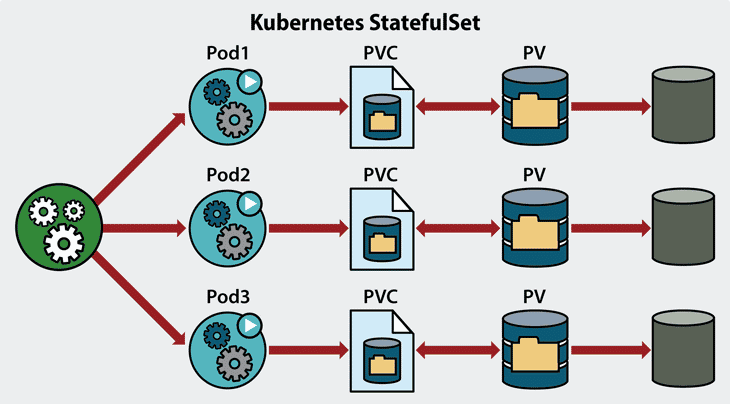Home » Posts tagged 'Kubernetes ingress controller comparison'
Tag Archives: Kubernetes ingress controller comparison
Kubernetes Ingress Controller Examples with Best Option
Kubernetes has 3 types of services namely. ClusterIP, NodePort, and load balancer. Ingress makes http routes outside the cluster available for services inside the cluster. If you are looking for the best Kubernetes ingress controller comparison visit https://kubevious.io/blog/post/comparing-top-ingress-controllers-for-kubernetes/.
One thing you should be aware of by now is that penetration is not the type of service that Kubernetes offers. Meanwhile, Kubernetes Ingress Controller mainly uses load balancers to manage traffic and intruders.
Ingress Controller is a smart load balancer. Ingress is a high-level abstraction that is responsible for enabling simple HTTP routing by host or URL. Always apply with a third-party provider. This service is nothing more than an entry controller.
The Kubernetes login controller is responsible for reading Ingress resource information and processing that data. Ingress is tightly integrated into the K8, which means your existing workflows around kubectl are likely to flourish well into penetration management.
It should be noted that inbound controllers do not usually require external balancing loads, but inbound controllers only add additional routing and control levels for the balancing load.
Kubernetes Ingress controller with load balancer
Regardless of your entry strategy, you may need to start with external balance weights. As a result, data traffic is routed to the K8 cluster service, which performs service-specific routing. In this setup, your load balance provides a stable endpoint that is nothing more than an IP address for accessing external traffic.
Both the intrusion controller and the K8 service require an external balance load. Therefore, NodePort was not designed to be used directly in production.
Kubernetes Ingress Controller Overview
Compare popular login controllers for Kubernetes and set the top consideration to choose the right controller for you. Even though Kubernetes was originally released in June 2014, you might be surprised that Fire Ingress Kubernetes remains in Kubernetes v1.18 beta. If you are looking for the best kuberenetes ingress controller visit https://kubevious.io/blog/post/comparing-top-ingress-controllers-for-kubernetes/.

From launching to Beta in early 2016 (Kubernetes v1.2), Fire Ingress’ has been very focused on portability and has been relatively light during this time. Recently, Christopher Luciano from IBM and Bowie DU from Google presented “the development of Ingress Kubernetes API for GA and around” in Kubecon North America 2019 and described various increased fire (eg better road adaptation, new ingress class resources).
With Ingress Fire, because it migrated to GA in version 1.19, I have gathered the general comparison of the popular ingress controllers available and some important decision considerations.
Ingress Vs Ingress Controller
Before exploring various Ingress controllers, let’s look quickly at what Kubernetes was entered and what the controller was doing.
To make some application functions available, Kubernetes offers three types of services:
Cluster: Add the final point of internal communication to the cluster
Node port: Provides a static port on each node to forward external calls to internal services
LoadBalancer: Make an external load balancer to route external demand to internal services
Even though Ingress is not a Kubernetes service, it can also be used to expose services to external requests.
The advantage of the entry of load balancer or node port is that the entry can combine the rule of routing to a single resource to expose some services.
Compare The Best Kubernetes Storage Solutions
Kubernetes revolutionized how the application was developed, deployed, and scaled. While Kubernetes is useful in container management, it does not support container data storage. This means that the storage mechanism must be provided externally on different hosts as needed, and this volume may need a scale when moving like increasing use. You can get the more details about the best kubernete storage solutions via https://kubevious.io/blog/post/comparing-top-storage-solutions-for-kubernetes/.

This article describes and evaluates popular cloud storage solutions. We will start with a quick overview of the cloud storage Tool and why they are needed for Kubernetes.
Simply put, to create data available when the reboot cluster requires a solution or storage mechanism that manages cluster data operations.Cloud storage solutions allow this comprehensive mechanism to store container-based applications and offer solutions to store data in the cloud-based environment.
Cloud storage solutions in this place mimic the characteristics of the Cloud environment. These include scalability, container architecture, and high availability for easy integration into container management platforms and permanent storage provision for container applications.
GlusterFS:
GlusterFS is an excellent open-source project that provides Administrator Kubernetes with a mechanism for deploying their own storage services in their current Kubernetes cluster. This is a well-defined file storage framework that can increase the beak, handle a large number of users, and distribute any file system on the disk system with support for various functions.
Clusters also use industry standards conventions such as SMB and NFS for network file systems and support identification of replication, cloning, and red bits to detect data corruption.
 Hi, my name is Martin and I am a teacher at Davis School of sports, Sacramento. Learning new stuff and writing about the latest topics is my hobby. I came up with Blue Water Fishing Classic so that knowledge can be shared without any limitations.
Hi, my name is Martin and I am a teacher at Davis School of sports, Sacramento. Learning new stuff and writing about the latest topics is my hobby. I came up with Blue Water Fishing Classic so that knowledge can be shared without any limitations.